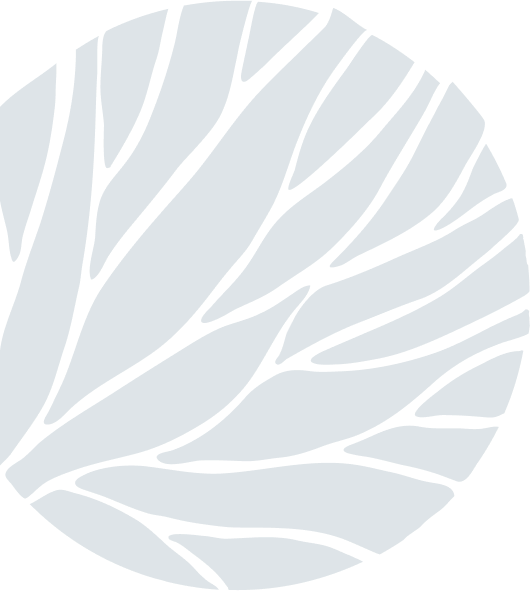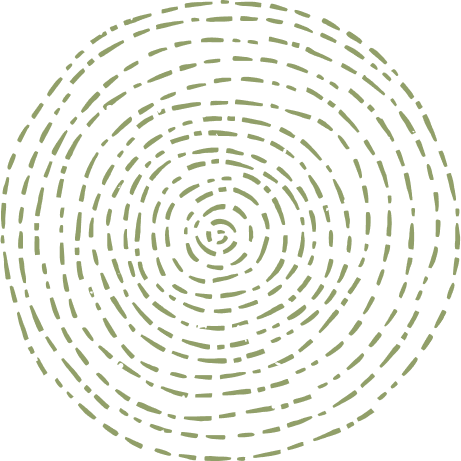Brown-headed Parrots
on Aug 15, 2023With a great variety of birds here at Sabi Sabi, you are sure to tick off a few beautiful birds on your life list. Birds of all different colours and sizes can be seen year-round at Sabi Sabi.
One of my personal favourite birds are the Brown-headed Parrots. You will often hear them before you see a quick green flash flying past you. These parrots are mostly green with a greyish-brown head and nape. They have bright yellow markings under their wings which are visible when they are in flight. The scientific name for the Brown-headed Parrot is Poicephalus cryptoxanthus where the second part of the name means hidden yellow, referring to the yellow underwing that you can see only in flight.
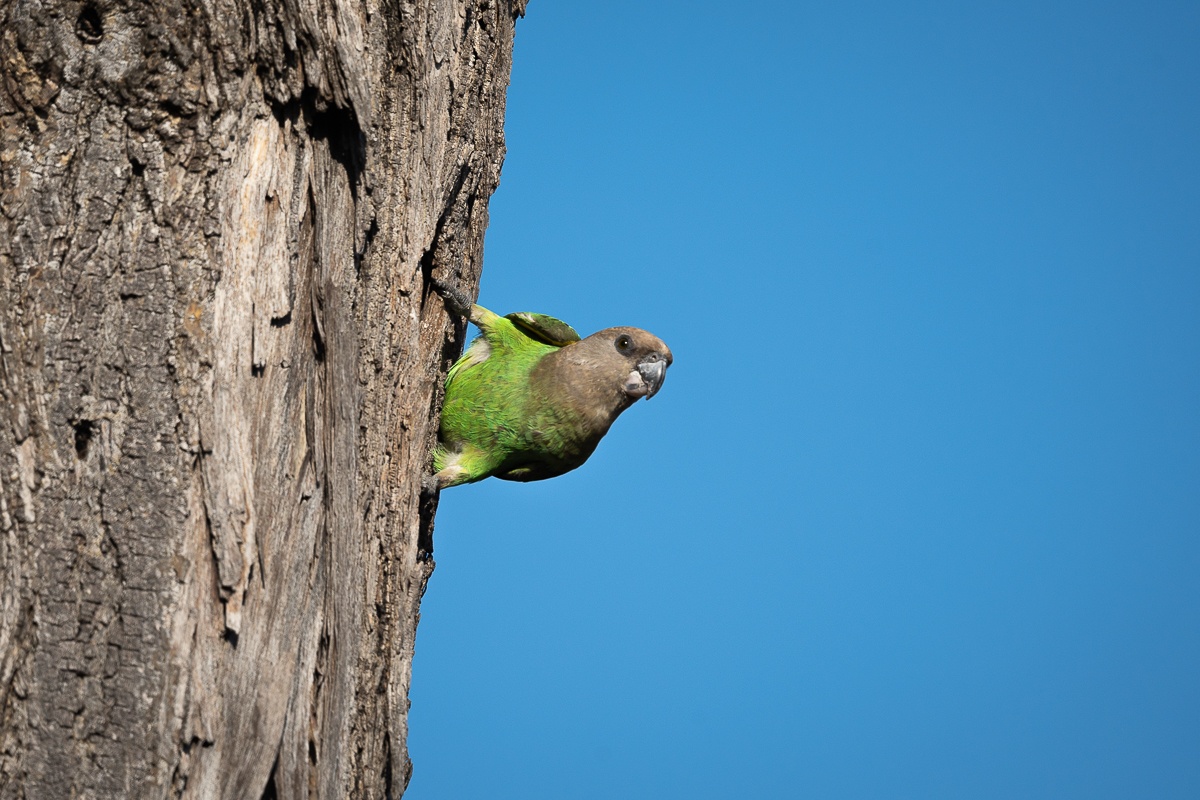
Their diet consists of fruits (they especially love figs so make sure you look in the fig trees on the reserve), kernels, seeds, flowers, green shoots, and nectar. They use their bill and feet to clamber around in tree canopies, using their bill to pluck the food, and then grabbing it in the one foot, holding on to the tree with their other foot. With fruits not always being available year-round, they rely a lot on other trees to provide food for them during wintertime. They will feed year-round on the fruits that Bushwillow and Cluster-leaf trees provide, but when winter comes, they rely on the fleshy fruits of the Jackalberry tree and the dry seeds of the Long-tail Cassia. Luckily for them, in summer a wide variety of fruits and seeds are available, including the Sycamore fig, False Marula, Knob-thorn, Umbrella-thorn and many more.
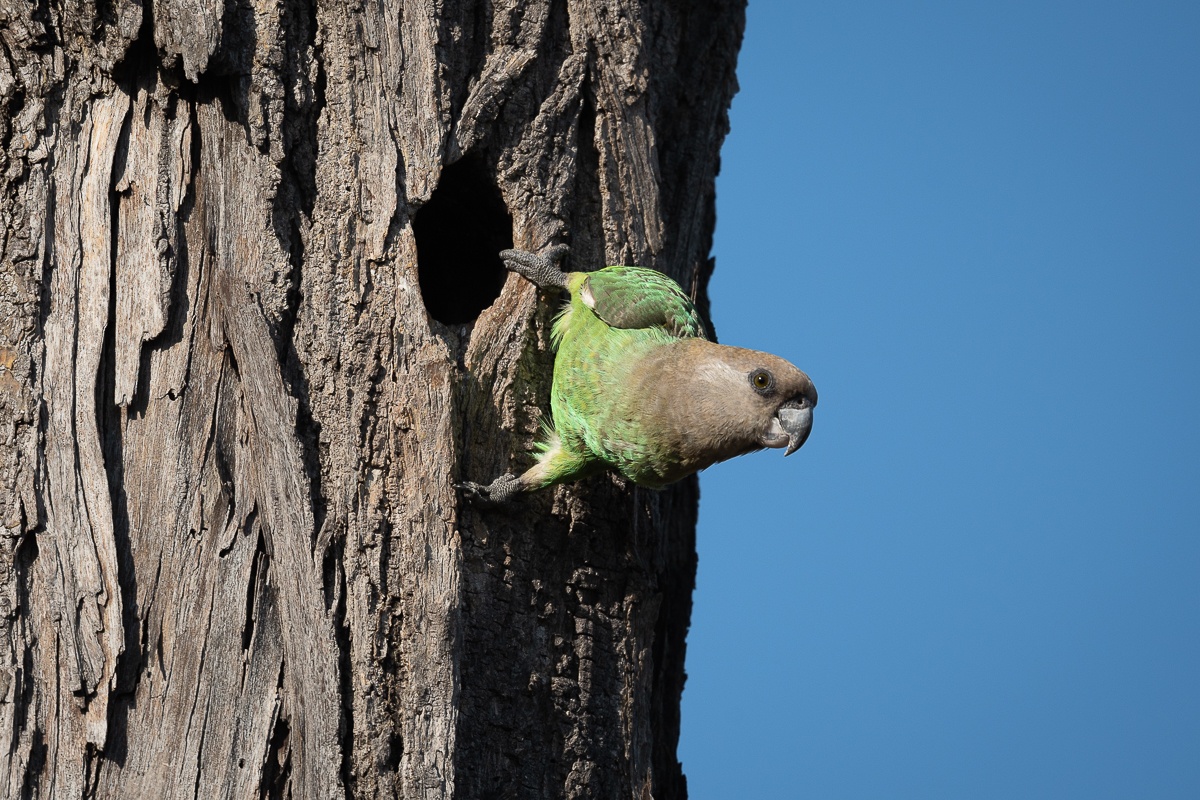
The Brown-headed Parrot’s breeding behaviour is quite interesting, and we had a great opportunity to watch how a breeding pair feeds their chick. They are considered monogamous, which means they only breed with one partner at a time, and they will remain paired year-round. During the non-breeding season, it is very common to see them in small groups, but when breeding season arrives, which is from April to October, they will break up in pairs.
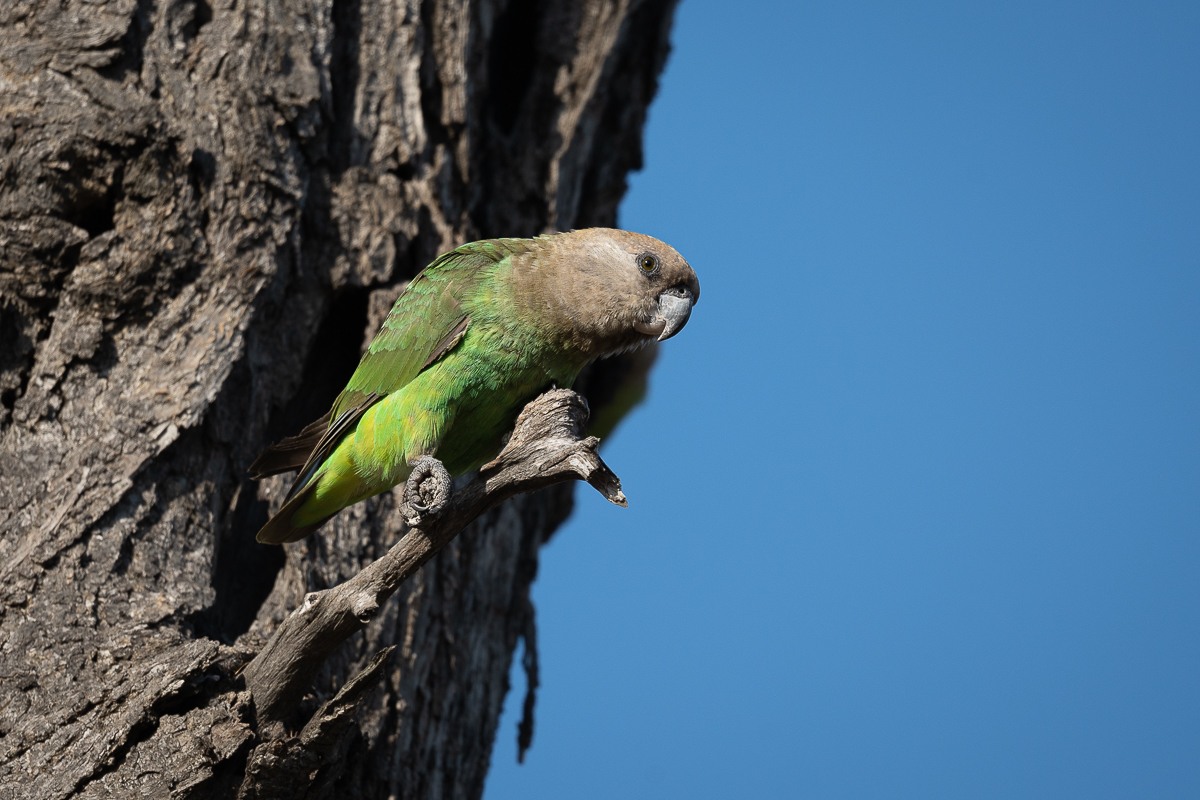
Using the old nest holes of woodpeckers, you can typically find three to four eggs in a nest. Their incubation period is around 28 days, and the eggs will hatch about two to four days apart. They are born altricial, which means they are completely helpless when they hatch. Their eyes will start to open on day 16 and pin feathers appear on the wings by day 28, and on the neck and back on day 35.
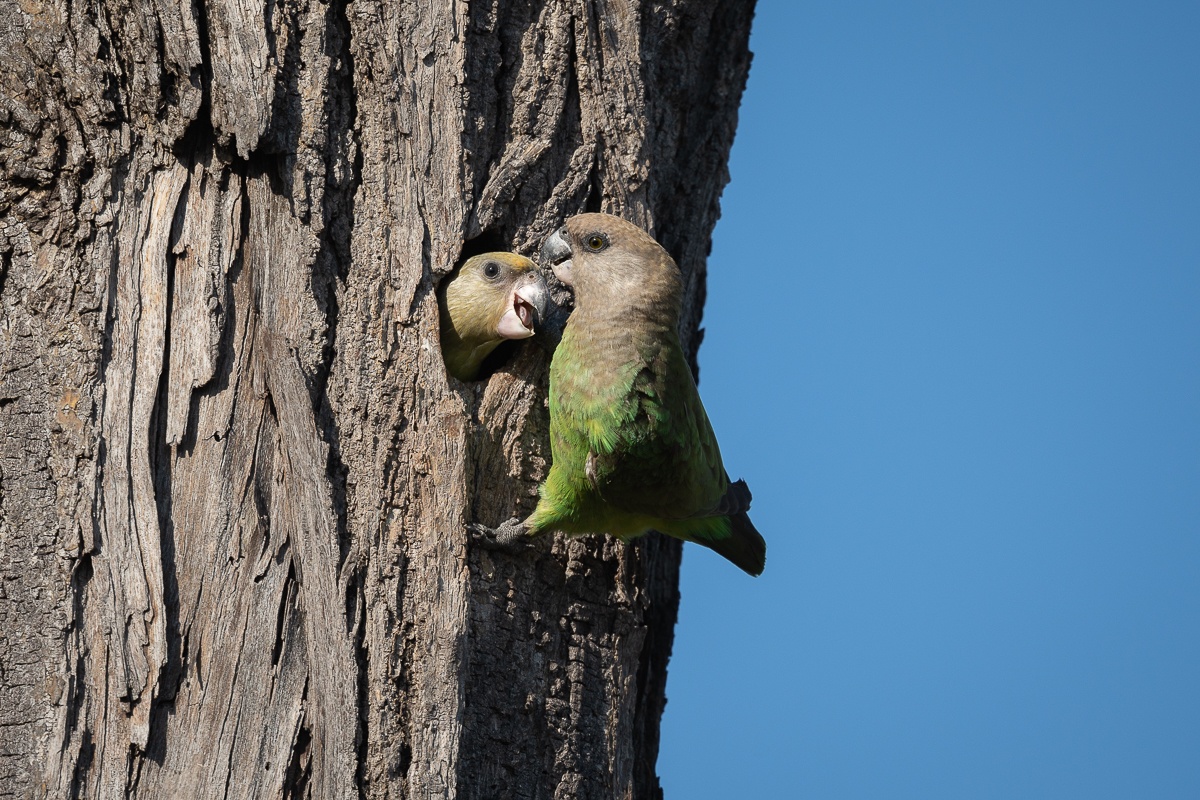
As we watched we realised that both the adults are feeding the chicks which means that they are already a few weeks old. The parents will go in separate ways to forage and meet back at the nest to feed the young. The female will first regurgitate to the male, and only then will the male feed the chicks. The parents will start weaning the chicks at about 8 – 10 weeks old.

After their nestling period, the chicks will be taken to a “nursery area” – usually an area of densely-foliaged trees surrounded by water – where they will remain silent and immobile. They will stay here for about 28 days before taking off. Brown-headed Parrots mature at the age of about 2 years but may not breed until the age of 3 to 4 years. They are one of the parrots that live the longest, up to 30 years of age.
Be sure to be on the lookout for these wonderful birds on your next visit at Sabi Sabi.
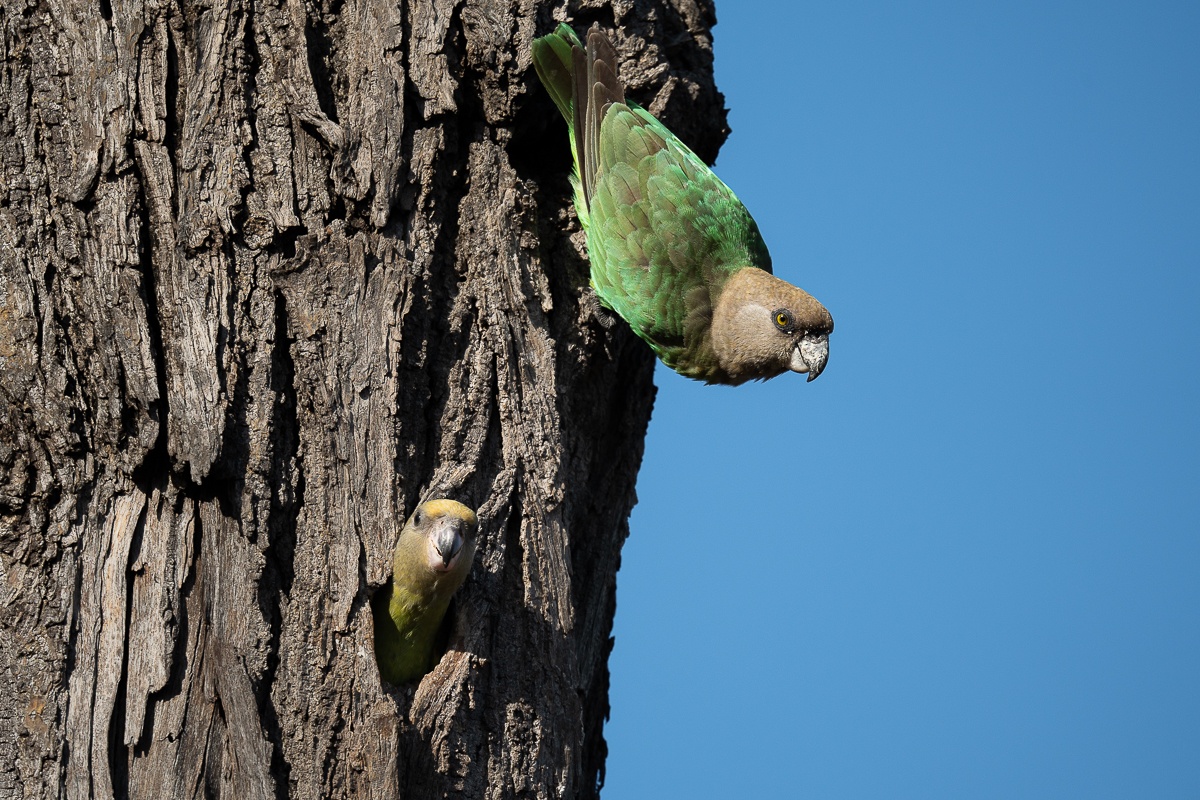
Blog by Daniel Greyvenstein (Bush Lodge Ranger)






